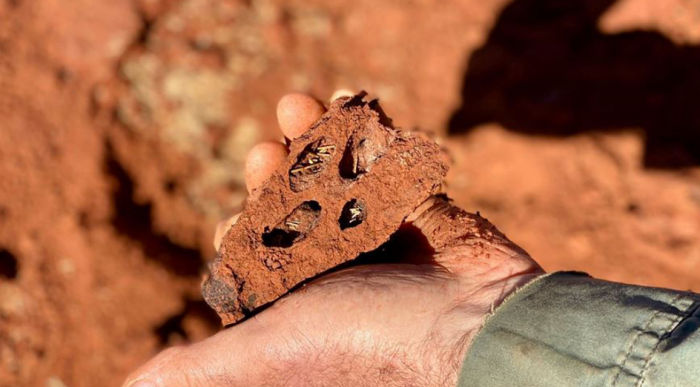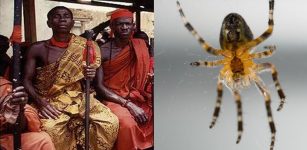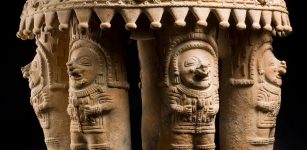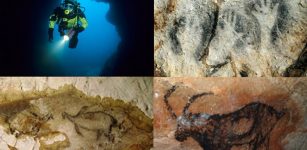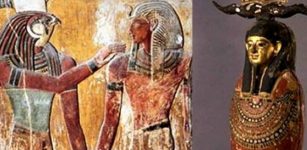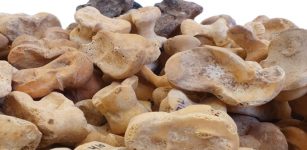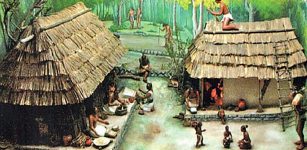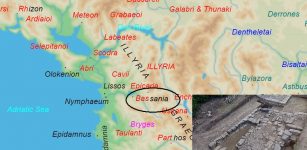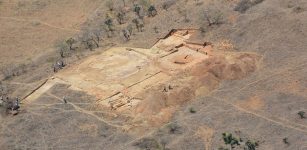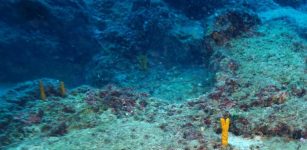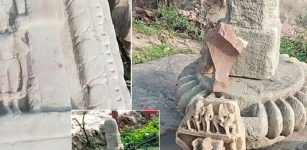Aboriginal Art And Knowledge Unlocks Mystery Of Fairy Circles
Conny Waters - AncientPages.com - Fairy circles – barren patches which make polka-dot patterns in dry and desert areas – were first described by scientists in Namibia in the 1970s, sparking global debate about the phenomenon.
A paper published in Nature Ecology & Evolution, authored by a cross-cultural team of researchers and Aboriginal people from Australia’s Western Desert region, has challenged scientific theories by learning from Aboriginal people.
Fairy circles. Credit: Adobe Stock - Brian Scantlebury
Team leader and ethnoecologist Dr. Fiona Walsh, an adjunct at UWA’s School of Engineering, said recent research in Australia by an international team used standard scientific techniques and concluded that fairy circles came about from plants competing for water and nutrients.
“However, when we worked with Aboriginal people to look at their practices and stories, art and designs, we arrived at a different conclusion,” Dr Walsh said.
“Aboriginal people told us that these regular circular patterns of bare ‘pavements’ are occupied by spinifex termites.
“We saw similarities between the patterns in Aboriginal art and aerial views of the pavements and found paintings that have deep and complex stories about the activities of termites and termite ancestors.”
Co-author and Martu elder Gladys Bidu calls the pavements linyji: “Linyji are the homes of termites who live underground. I learnt this from my old people and have seen it myself many times,” Ms Bidu said.
“We gathered and ate the Warturnuma that flew from linyji. Warturnuma is wama, delicious. Old people also put their seeds on the hard linyji. They hit seed to make damper; our good food.” Warturnuma are fat-rich flying termites.
Experiences like these have been passed down through generations by Martu, Warlpiri and other Aboriginal groups, the research team found.
The team surveyed plots containing multiple ‘fairy circles’ on Nyiyaparli country, east of Newman in WA’s East Pilbara region, excavating 60 trenches down to 15cm in depth. They also looked at pavements on Newhaven, an Australian Wildlife Conservancy property in Warlpiri country, Northern Territory.
As Aboriginal people foretold, in the pavements we find termite chambers and chaff within the consolidated soils of the termitaria. Credit: University of Western Australia
“The pavement surface is concrete hard,” Dr Walsh said in a press statement. “After we dug and then dusted to clean the trenches, 100 per cent of them had termite chambers seen horizontally and vertically in the matrix. Forty-one per cent of the trenches contained live harvester termites.
“Termites and termite structures were much more common under the pavements than in the spinifex grasslands next to them which provided alternative scientific evidence to the dominant international theory explaining the ‘fairy circle’ phenomenon in Australia.”
Co-author and termite ecologist, Associate Professor Theo Evans from UWA’s School of Biological Sciences said that harvester termites were like the krill of desert ecosystems.
“They are super-abundant – most people think of above-ground termite mounds, but there is a whole community that lives mostly underground and emerges to eat dead spinifex or fly to reproduce,” Associate Professor Evans said.
Aboriginal art. Credit: dun_deagh - Flickr
The cross-cultural research has led to unexpected findings. Desmond Taylor, Martu interpreter and co-author, remembered Mulyamiji, great desert skinks which are now a threatened species. “After good rains in linyji country, Mulyamiji would be born in water lying on the linyji. My mother, my two fathers, my uncle told me this long ago.” This breeding behaviour has not been reported for the species before.
Dr. Walsh said Desmond’s recollection provided one outstanding example of how Aboriginal people’s knowledge had not only informed but led science questions.
“The water-holding characteristics of termite pavements were unknown to desert scientists until we recognised clues in the stories of our Aboriginal colleagues and Aboriginal art,” Dr Walsh said.
As a result, co-authors UWA Professor Carolyn Oldham and student Matilda Nelson will now work to learn how rain pools on termite pavements in sandplains.
Careful use of an air blower better revealed termite structures after excavations. From left are Dr Fiona Walsh, Ron Witt and Dr Peter Kendrick. Credit: University of Western Australia
The researchers concluded that through two-way learning, Aboriginal knowledge can lead and inform and contrast and intertwine with science.
“Aboriginal people refined their encyclopedia and authoritative knowledge when living continuously on this continent for at least 65,000 years and their knowledge is critical to improving ecosystem management and in understanding and caring for Australia’s desert,” Dr Walsh said.
Written by Conny Waters - AncientPages.com Staff Writer


